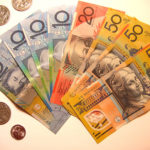Gold held ground above $1 200 on Tuesday as a weak dollar eased pressure on the precious metal and investors sought safe haven amid turmoil in emerging market economies and tumbling commodity prices. Copper slid for a second day as Chinas manufacturing activity contracted but the fall was cushioned by better-than-expected data from Europe. Silver, platinum and palladium declined as well.
Comex gold for delivery in February rose 0.36% to $1 212.1 per troy ounce by 14:30 GMT, having shifted in a daily range of $1 223.9 – $1 193.6 an ounce. The precious metal fell 1.21% on Monday to $1 207.7, but not before it dropped to $1 191.3, the lowest since December 8th.
The Russian ruble fell to a record low after a 6.5% interest rate hike to 17% by the countrys central bank failed to revive confidence in the national currency. The Turkish lira was also at an all-time low, while India’s Reserve Bank has been intervening to support the rupee which has struggled with a widening trade deficit.
Meanwhile, oil prices continued their rout to the lowest in more than five years, with the global Brent benchmark slipping below $60 per barrel.
A weaker dollar also helped ease pressure on the precious metal. Data by the US Commerce Department showed that building permits fell to an annualized 1.035 million in November from 1.080 million a month earlier, while housing starts slid to an annualized 1.028 million.
The US dollar index for settlement in March fell 0.75% to 88.020 by 14:34 GMT, having ranged between 88.735 and a two-week low of 87.830. The US currency gauge gained 0.10% on Monday to 88.682. A weaker greenback makes dollar-denominated commodities cheaper for holders of foreign currencies and bolsters their appeal as an alternative investment.
Fed meeting
Investors awaited the outcome of FOMCs two-day meeting which begins today. Policy makers are expected to debate over whether or not to increase interest rates, which have been held near zero since 2008.
At their last meeting in October, Fed officials restated that they will keep borrowing costs low for a “considerable time” as inflation remains below Fed’s targeted level and there are signs of weakness across Europe and Asia. However, since then the US economy has significantly improved and more jobs than expected have been created.
Adrian Ash, head of research at BullionVault.com, said for CNBC: “Until the Fed starts to see inflation at 2 percent and above, I think there is very low risk of them actually raising rates. If the market is already priced in for a rise in first half of 2015, we should expect disappointment.”
Assets in the SPDR Gold Trust, the biggest bullion-backed ETF, slid 2.39 tons to 723.36 tons on Monday, the first drop in five days.
Copper
Copper fell for a second day as the latest data from China continued to point to an economic slowdown in the worlds top consumer of the metal.
Comex copper for delivery in March traded 0.92% lower at $2.8520 per pound at 14:34 GMT, having shifted in a daily range between $2.8860 and a two-week low of $2.8440 a pound. Prices fell 1.89% to $2.8785 on Monday.
A preliminary private report showed that factory activity in China slowed for the first time in seven months in December, adding to a pile of downbeat data from the world’s second-biggest oil consumer.
Markit Economics reported that the HSBC Flash China Manufacturing PMI slid to 49.5 in December after stalling at 50.0 in November, hitting the lowest level in seven months and fueling expectations for additional monetary stimulus measures by the People’s Bank of China. The output sub-index was at 49.7 from 49.6 in November, while new orders entered the contraction zone as domestic demand slowed considerably. Price indices also marked a sharp fall.
Hongbin Qu, Chief Economist, China & CoHead of Asian Economic Research at HSBC, commented in the report: “The manufacturing slowdown continues in December and points to a weak ending for 2014. The rising disinflationary pressures, which fundamentally reflect weak demand, warrant further monetary easing in the coming months.”
Separately, data by Chinas National Bureau of Statistics showed that the countrys refined copper production hit a record for a fourth straight month as high processing fees and abundant supply of raw material prompted smelters to ramp up operations. Output rose by 3.1% last month to 755 492 tons from 732 746 tons in October.
The metal was also pressured as a gauge measuring confidence among US home builders in December came in below expectations yesterday, although industrial production grew the most in 4-1/2 years. Todays downbeat building permits and home starts also weighed on the industrial metal.
Europe sentiment
Providing a floor for the market, manufacturing activity in the Eurozone edged up to the highest since July in December, preliminary data by Markit Economics showed. The Flash Eurozone Manufacturing PMI rose to 50.8 from Novembers final reading of 50.1. Factory activity in France contracted at a faster rate but Germany compensated with a higher-than-expected rebound after entering the contraction zone in November.
Moreover, economic sentiment in powerhouse Germany improved in December, with the corresponding ZEW Economic Sentiment Index surging to 34.9. Analysts had projected a jump to 20.8 from 11.5 in November. The Eurozone as a whole also saw a significant improvement in economic expectations, the Zentrum fur Europaische Wirtschaftsforschung reported.





